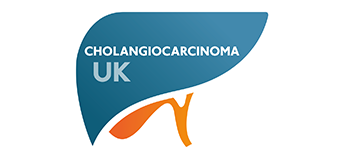Radiotherapy
Radiotherapy treats cancer by using high-energy x-rays to destroy cancer cells, while doing as little harm as possible to normal cells. It may be given externally from a radiotherapy machine, or internally by placing radioactive material close to the tumour.
Radiotherapy is also sometimes used if an operation is not possible. It cannot cure the cancer but may help to shrink it or slow it down.
Photodynamic therapy (PDT)
PDT uses a combination of laser light of a specific wavelength and a light-sensitive drug to destroy cancer cells. In cholangiocarcinoma it is used to help relieve symptoms.
The light-sensitive drug is injected into a vein. It circulates in the bloodstream and enters cells throughout the body. The drug enters more cancer cells than healthy cells and does not become effective until it is exposed to laser light of a particular wavelength.
About two days after the injection the laser light is shone on to the cancer via an endoscopy tube. This makes the drug active and destroys the cancer cells.
Cyberknife treatment
The Cyberknife is the very latest in radiotherapy technology and works very differently from conventional radiotherapy machines. The robotic arm and image sensors can track a moving target allowing for hundreds of beams of radiation from a wide variety of angles to be delivered with pinpoint accuracy.
This equipment is now being installed in several private and NHS locations in the UK and there are plans for it to be available for patients with hard-to-treat tumours in the prostate, pancreas, lung, spinal cord, head and neck, and liver. It has been used in the Mayo Clinic in the USA to treat cholangiocarcinoma, but we await news on whether this will be available to suitable CC patients in the UK.
Cholangiocarcinoma







